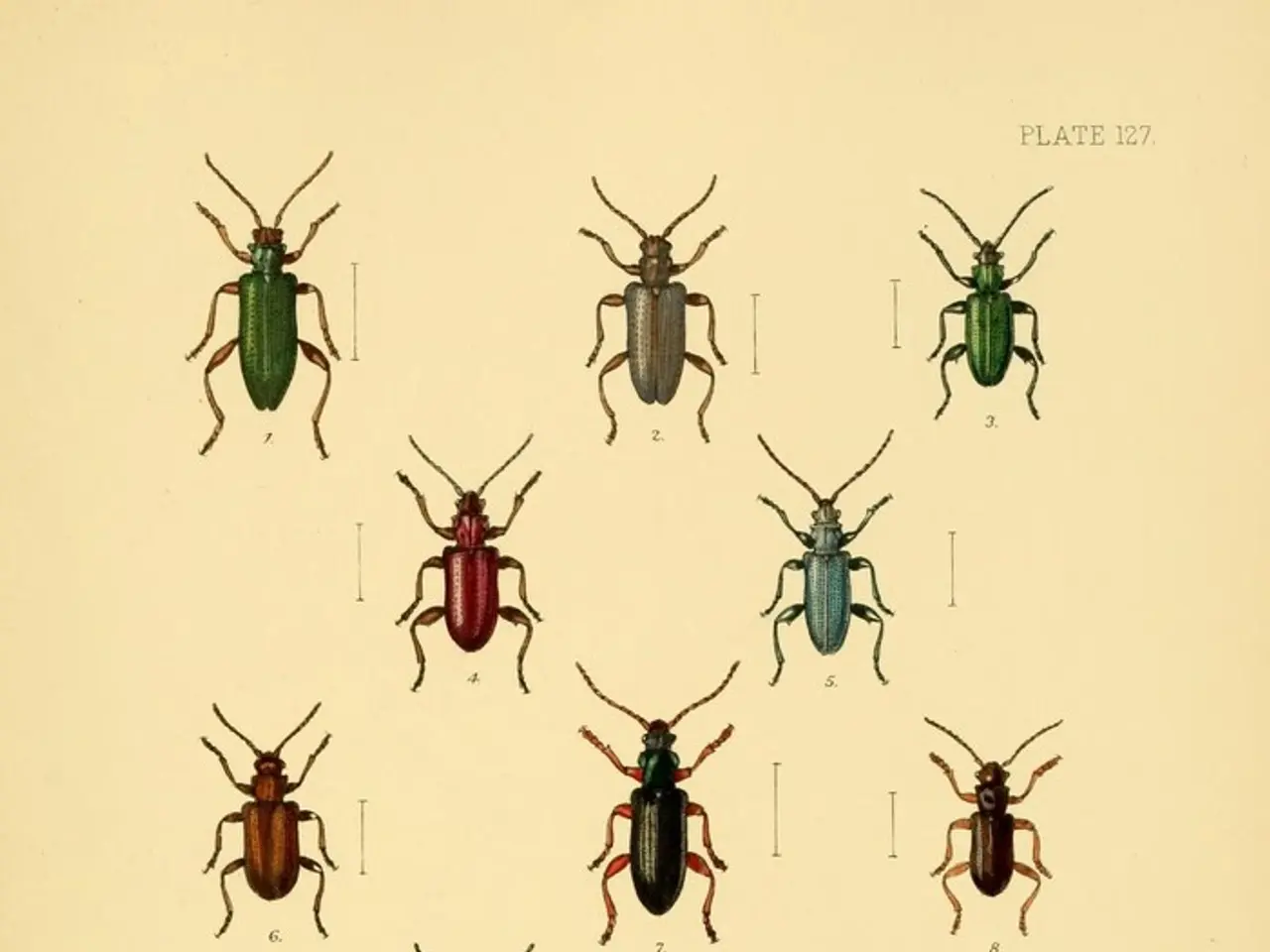Poisonous algae transforming South Australia's coral reefs into submerged cemeteries, with no relief in sight
The coastline of South Australia has been under siege since March, as a harmful algal bloom has choked the waters of the Great Southern Reef. This ecological crisis, primarily caused by a perfect storm of environmental factors, has had a devastating impact on the region's marine life, fishing industry, and local wildlife.
The algal bloom was fueled by a prolonged marine heatwave, with sea surface temperatures rising about 2.5°C above average. This warming of the waters accelerated algal growth, creating an ideal environment for the harmful red tide species, Karenia mikimotoi, to thrive.
The calm sea conditions, including minimal tidal mixing and little wind, prevented the algae from dispersing and allowed it to accumulate, further exacerbating the bloom. An influx of nutrient-rich runoff from river catchments, including stormwater, agricultural runoff, and polluted freshwater from the 2023 Murray River flood, provided excess nutrients that acted like a supercharged fertilizer for the algae.
Additional dissolved carbon from dead seagrass and seaweed caused by the heatwave further fueled the bloom, creating a self-perpetuating cycle of destruction.
The extent of the bloom covered around 4,400 to 4,500 square kilometers and reached depths of 20 to 30 meters along South Australia's coastline, including the Great Southern Reef and adjacent beaches and estuaries. Approximately 450 marine species have been killed, with more than 14,500 dead animals recorded by citizen scientists.
Affected marine life ranges from fish, sharks, and rays to invertebrates like leafy seadragons and giant cuttlefish. The transformation of vibrant underwater ecosystems into barren seascapes has caused serious ecological damage and food chain collapse.
The economic and social impacts of the bloom threaten South Australia's fishing and aquaculture industries with potential years-long recovery times. Seafood processors, transport companies, grocers, and restaurants are all feeling the impact of the algal bloom.
Visual signs like discolored water and foam wash-ups on coasts, observed during calm, warmer-than-average conditions in late summer to autumn 2025, are stark reminders of the crisis.
In response, the South Australian government allocated AU$28 million (about US$18 million) to counter the disaster and support affected industries and ecosystems.
This algal bloom serves as a stark reminder of the severe ecological impacts of climate change-driven marine heatwaves combined with nutrient pollution, posing a major threat to marine biodiversity and coastal livelihoods in South Australia.
For locals like Nathan Eatts, a commercial fisherman who has not caught a single squid since April, the algal bloom has been a heartbreaking event. "It's unlike anything I've ever seen before," he said. "I hope we can recover from this."
References: [1] ABC News. (2025, September 15). South Australia's Great Southern Reef suffers devastating algal bloom. Retrieved from https://www.abc.net.au/news/2025-09-15/south-australia-great-southern-reef-algal-bloom/13285248
[2] The Conversation. (2025, October 1). The Great Southern Reef is in crisis: Here's what we know about the algal bloom. Retrieved from https://theconversation.com/the-great-southern-reef-is-in-crisis-heres-whats-we-know-about-the-algal-bloom-172367
[3] The Guardian. (2025, October 15). South Australia's fishing industry faces years-long recovery from algal bloom. Retrieved from https://www.theguardian.com/australia-news/2025/oct/15/south-australias-fishing-industry-faces-years-long-recovery-from-algal-bloom
[4] The Advertiser. (2025, November 1). Dead dolphin found on local beach a reminder of algal bloom's devastating impact. Retrieved from https://www.adelaidenow.com.au/news/south-australia/dead-dolphin-found-on-local-beach-a-reminder-of-algal-blooms-devastating-impact/news-story/70d2c81918f3c1814e032e7e7b378d3e
The algal bloom, exacerbated by climate change and nutrient pollution, has affected the health and wellness of South Australia's marine ecosystem, causing the death of numerous species and threatening the region's fishing industry. This environmental crisis has highlighted the potential neurological disorders and mental health impacts on local communities dependent on these industries. Furthermore, the event serves as a warning for the increased prevalence and severity of similar events in the future due to climate change, emphasizing the need for advancements in environmental science and medical-conditions research.




